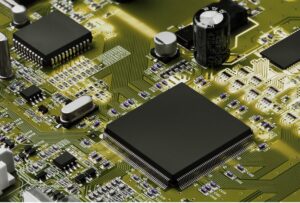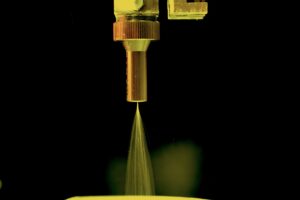What are Conformal Coatings? All your frequently asked questions answered.
The rising popularity of conformal coatings extends beyond traditional applications, particularly in densely packaged portable electronic devices vulnerable to environmental-induced failures. However, navigating the selection of appropriate coating materials and application processes can pose challenges and consume significant time, especially for those unfamiliar with the subject. Lack of comprehensive understanding and adherence to relevant standards and specifications can result in costly and irreversible errors.
We created this page to answer all your conformal coating questions providing a foundational overview and hopes to remain an invaluable resource on conformal coatings.
Content Index:
- 什么是保形涂料?
- What are the Different Types of Conformal Coatings?
- 使用保形涂料的优势是什么?
- How to Apply Conformal Coatings?
- Is Conformal Coating the Same As Waterproofing?
- 保形涂料在潮湿时是否会导电?
- Methods of Application
- 干燥和/或固化保形涂料的方法?
- Glossary (Terms & Definitions)
1.What is a Conformal Coating?

Conformal coatings are a breathable protective layer that will protect against the environment the PCA is exposed to by filtering out the airborne contaminants and maintaining long-term surface insulation resistance but will also allow any moisture trapped in the circuit board to escape.
电子产品保形涂层的概念最初是在几十年前通过研究提出和发展的,以满足军事上的苛刻要求。HumiSeal是早期研究的一部分,60多年来一直是先驱者和领导者,如今该技术已扩展到一系列行业,包括。
- 航空航天
- 汽车,包括混合动力和电动汽车
- 工业控制
- 白色家电
- 电信业
- 传统和可再生的能源
2.What are the Different Types of Conformal Coatings?
Conformal coatings come in a wide range of forms. From a physical standpoint, conformal coatings are commonly dispersed in organic solvents (solvent-based) or supplied in high or 100% solids (silicones and most UV curables).
From a chemical standpoint, conformal coatings’ standard chemistries include:
丙烯酸保形涂料可能是所有保形涂料材料中最受欢迎的,因为它们易于应用和移除,使用的工艺窗口很宽。丙烯酸涂料干燥迅速,抗真菌能力强,罐体寿命长。此外,丙烯酸材料在固化过程中几乎不产生热量,消除了对热敏感部件的潜在损害。该涂料具有低收缩性,提供显著的防潮性,并表现出低玻璃化温度。
聚氨酯涂料有单组分或双组分配方可供选择。这两种选择都具有出色的防潮性能,而且耐化学性远远高于丙烯酸涂料。单组分聚氨酯,虽然易于应用,并享有较长的罐装寿命,但有时需要较长的固化过程以达到完全或最佳的固化。在某些情况下,可以通过加热来加速固化周期。双组分配方在加热的帮助下,可以在短短一到三小时内达到最佳固化性能。
有机硅保形涂料在高温环境下的应用最为广泛,这是因为它们具有比其他保形涂料化学成分更强的长期耐受能力。这一特性使其成为汽车引擎盖下应用的主要选择。它们还能被涂成更厚的薄膜,如果被涂的组件被放置在高振动的环境中,它们可以作为一种减震/隔离工具。
HumiSeal的合成橡胶产品是独特的配方,可以使用户实现 "传统 "涂料无法提供的特定保护/环境目标。合成橡胶材料的特点是玻璃化温度极低,因此在广泛的温度范围内具有稳定的模量和极强的灵活性。在目前所有的树脂中,合成橡胶的透湿性最低。这些产品不一定代表我们完整的合成橡胶系列。
UV curable acrylated urethanes.
HumiSeal的紫外光固化保形涂料代表了一种令人兴奋的创新,提供了卓越的性能。当与极快的固化相结合时,可以实现短的周期时间和最大的生产速度。这些产品可以使用传统的自动喷涂设备进行喷涂,只需相对简单地增加一个小尺寸的UV光固化装置。
Each chemistry is associated with certain physical properties that are suited for certain conditions and end-uses. For example, silicones tend to have the highest temperature resistance while synthetic rubbers and UV curables often provide the highest level of humidity resistance.
3- What Are the Advantages of Using a Conformal Coatings?
The advantages of conformal coatings can be summarized as follows:
- Insulating property allow a reduction in PCB conductor spacing of over 80%
- 可以帮助消除对复杂、精密外壳的需求
- Light weight
- Completely protect the assembly against chemical and corrosive attack
- Eliminate potential performance degradation due to environmental hazards
- Minimize environmental stress on a PCB assembly
- Inherent flexibility conforms to varied component profiles
Ideally, conformal coatings should exhibit the following characteristics:
- Simple application
- Easy removal, repair and replacement
- High flexibility
- Protection against thermal and mechanical shock
- Protection against environmental hazards
4-How to Apply Conformal Coatings?
保形涂料如何应用,主要取决于。
- 首选的应用方法
- Existing Available Equipment (Dip/Spray equipment, curing equipment etc.)
- 板卡设计/复杂度/掩码需求
- 希望的数量/周期时间。
5-Is Conformal Coating the Same as Waterproofing?
保形涂料提供了对湿度和水分的 抵抗力,但它并不是人们所期望的防水屏障。事实上,保形涂料被要求具有一定的渗透性,以允许夹带的污染物或电子产品的排气安全地排出,而不会造成损害。
6-Is Conformal Coating Conductive When Wet?
保形涂层被设计成具有相对较高的抗电导性。这种介电性能相对不受液体(如水)在涂层表面的影响。然而,液体本身会在表面上保持导电性,长期暴露在静止的液体中,由于涂层内长时间的吸收和化学降解,最终会在一定程度上降低保形涂层的介电性能。
7-Methods of Conformal Coating Application: (In order of sophistication)
| 优势 | Disadvantages | |
| Brush on |
|
|
| Dip coat |
|
|
| Hand Spray |
|
|
| Selective automated spray |
|
|
8- Methods of Drying and/or Curing Conformal Coatings?
在上述所有四种应用方法中,还需要对所应用的涂层进行干燥,并在某些情况下进行固化或交联。并非所有的方法都适用于或可能适用于所有的化学制品,例如,紫外线固化涂料只能用紫外线固化设备进行固化。
| 优势 | Disadvantages | |
| Air Dry |
|
|
| Oven dry (batch or contiuous) |
|
|
| UV light cure |
|
|
9- Conformal Coatings Glossary (terms & definitions)
Adhesion promotion
Either a chemical process of preparing a surface to enhance its ability for a coating to adhere to it (eg. Plasma) or an
internal modification to the conformal coating material to help ensure it adheres to the intended, or difficult to adhere to
substrate.
Adhesion failure
The rupture of an adhesive bond such that the separation appears to be at the adhesive-adherent interface.
AR/UR
Abbreviation standing for acrylic resin and urethane resin combination chemistries.
Bridging
Fillet or meniscus formation of coating around the leads of a component caused by capillary action.
Creep
Strain, deformation, or movement of coatings caused by time and/or temperature.
Cross-linking
The formation of chemical bonds between molecules in a thermosetting resin during a polymerization reaction.
CTE
Coefficient of Thermal Expansion – linear dimensional change with respect to an original dimension due to a change in
temperature. Generally, the greater the value, the more mismatch there is between the coating and substrate during
thermal excursions, which can result in stress-cracking.
Cure
A change in the physical properties of a polymer by a chemical reaction.
Degradation
Decrease in quality or integrity. Loss of desired physical, chemical or electrical properties.
Delamination
A separation between a conformal coating layer and the surface it is adhering to.
De-wetting
The propensity of the coating material to refuse to wet the surface evenly. This phenomenon is generally a sign of
localized contamination, or that the surface energy of the substrate was too low to start with.
Dielectric constant
The ratio of the capacitance of a configuration of electrodes with a specific material as the dielectric between them to the
capacitance of the same electrode configuration with a vacuum or air as the dielectric.
Dielectric strength
The maximum voltage that a dielectric can withstand under specified conditions without resulting in a voltage breakdown,
usually expressed as volts per unit dimension.
Dilution
Reduction in viscosity. Can be achieved by mixing a non-reacting, soluble agent (solvent) into the material.
Dissipation factor
A value that represents the tendency of insulating or dielectric materials to absorb some of the energy in an alternating-current signal.
Durometer
A measure of the degree of hardness or the resistance to be deformed or fractured.
Filler
A substance that is added to a material to modify its solidity, bulk, or other properties.
Fish eyes
A surface defect to the conformal coating that resembles the eyes of a fish, usually resulting from localized surface contamination.
Gel time
Time taken for a liquid polymer to begin to exhibit pseudo-elastic properties or to be immobilized.
Glass transition temperature Tg
The temperature at which an amorphous polymer, or the amorphous regions in a partially-crystalline polymer, changes from behaving more
like a glass to more like a rubber.
Hardness
A property that indicates the ability of a material to resist penetration of a specific type of indentor when forced into the material under
specified conditions. Indentation hardness is inversely related to the penetration and is dependent on the elastic modulus and viscoelastic
behavior of the material.
Insulation resistance
A measure of the capability of a material to electrically insulate adjacent conductors from each other. Moisture Insulation Resistance (MIR) is
the same measure made under hot and humid conditions, usually 65ºC/95%RH.
Masking
The process of applying a temporary film, tape boot or plug that prevents the area covered from being coated.
Monomer
A chemical compound that can undergo polymerization.
MSDS
(Material Safety Data Sheet) Provided by the manufacturer, contains relevant properties of the material with regards to safety concerns.
Multi-layering
The process of applying more than one layer of coating to make up the desired thickness.
Orange peeling
Surface defects in the conformal coating that resembles the surface or skin of an orange. Orange peeling is generally caused by a
combination of excessive drying speed resulting in wetting issues.
Outgassing
The gaseous emission from a processed coating layer when it is exposed to heat or reduced air pressure, or both.
Permeability
The ability of molecules of one material to flow through the matrix of another material. The degree of permeability is dependant on the
molecular structure of both materials.
Polymerization
The formation of a matrix of cross-linked long chain molecular structure from short chain monomer molecules.
Pot life
The length of time a material, substance, or product can be left in an open package or dispenser, while it meets all
applicable specification requirements and remains suitable for its intended use.
Rework
The act of reprocessing non-complying articles, through the use of original or alternate equivalent processing, in a manner
that assures compliance of the article with applicable drawings or specifications.
RTV
(Room Temperature Vulcanizing) The development of desired dry film properties at room temperature..
Shelf life
The length of time a material, substance, or product can be stored, under specific environmental conditions, while it
meets all applicable specification requirements and remains suitable for its intended use.
Shrinkage
Reduction in volume as a wet, freshly applied layer dries/cures into a coating film with desired properties.
Solids content
The ratio of the resin or polymer material to the solvent carrier. The percentage of material converted to solid coating
during curing.
Stripping
The process of eroding a material by chemical reaction. Stripping agents can be used to remove certain types of
conformal coating for the purpose of rework or repair.
Surface tension
The natural, inward, molecular-attraction force that inhibits the spread of a liquid at its interface with a solid material.
Viscosity
The property of a polymer to frictionally resist internal flow in the liquid state that is directly proportional to the applied
force. High viscosity materials generally resist flowing and levelling.
VOC
(Volatile organic compound) Regulated compounds containing at least one carbon atom and having a measurable vapor
pressure.
Wetting
The formation of a relatively uniform, and adherent film of materials on a surface. Surface tension of the applied material
must be lower than the surface energy of the substrate to enable this. Inability of a coating to wet a substrate is usually
indicative of surface contamination or an inherently low surface energy substrate (eg Teflon).


